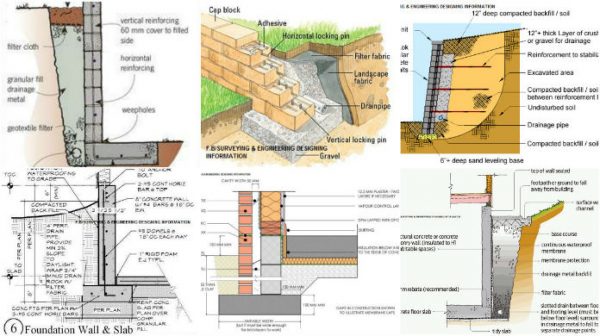Not known Details About Austin Construction Company
Table of ContentsNot known Details About Austin Construction Company How Ace Construction Company Austin can Save You Time, Stress, and Money.How Ace Construction Company can Save You Time, Stress, and Money.Little Known Facts About Ace Construction Company.

The heel is the base under the backfill. Although built in a very similar way to Gravity walls, Cantilever walls use significantly less product. This kind of wall is normally favoured in business projects for its strength. If you're trying to find an option to either stabilise a slope or include disintegration, then this is the maintaining wall for your task.


Our group at Solutions Developed can help you choose the very best maintaining wall choice for your job. Speak with our group to discover how we can help build your keeping wall - Ace Construction Company Austin.
Ace Construction Company Texas Things To Know Before You Get This
When it comes to property keeping walls, there are a range of materials to pick from. You'll need to think about the function of the wall, the appearance your desire and your budget when choosing what maintaining wall product is right for you. Whether you select cinder block, stone, or another material, you'll desire to understand the fundamentals of keeping wall building and construction so that you can make sure your wall is developed and constructed correctly.
Does your backyard contain slopes, dips, and inclines? Then you likely have a keeping wall somewhere on your home (Ace Construction Company Austin). Utilized all over from highway building and construction to landscaping, maintaining walls hold back earth that would otherwise erode or collapse. Homeowners frequently depend on retaining walls to keep soil steady in elevated lawn features, but they can likewise utilize the manmade structures when planting tiered gardens on a sloped location of yard, controlling erosion on an incline, or developing an elevated sitting spot.
Maintaining walls have a wide array of uses around the lawn, all of which involve keeping earth from spilling off a steep slope. They're important in the production of sunken patio areas, walkout basements, and any other hardscape with an abrupt separation of ground elevation. You'll also discover keeping walls in parks and public gardens, where they act as retainers for plants, statues, and decorative landscaping aspects.
But, if you're wanting to undertake a do-it-yourself job, keeping wall blocks (available at most home enhancement stores) are your best option. These blocks cost between $1. 25 and $4 per block, depending upon their size and Resources texture, and they include locking flanges that connect each row of blocks together.
Not known Factual Statements About Ace Construction Company Texas
Larger maintaining walls, which are not DIY-friendly, are more expensive due to the labor costs included. A natural stone or brick retaining wall laid by a mason can cost upwards of $20 per square foot, and a put concrete maintaining wall will set you back $13 to $18 per square foot.
If you're preparing to develop a keeping wall, talk to your regional building authority ahead of time. Retaining walls can modify water flow and impact your neighbors, so you might require to obtain either a zoning authorization or a building permit. Local building codes and ordinances vary in between communities, so do not skip this step.
If you're preparing to construct a retaining wall, consider the list below factors relating to support, foundation, backfill, and drain. When building a retaining wall, landscapers often slope them somewhat towards the earth they're including. This design, referred to as "step-back building and construction," creates a tough wall structure that presses back versus the lateral pressure of the soil behind it.
Some types of maintaining walls need extra structural assistance to keep them from toppling over. This includes vertical walls that don't slope toward the included earth, along with walls higher than three feet. Depending on the height of the wall and the pressure of the earth behind it, the additional assistances might be in the kind of buried footings, steel support, cantilevered design, or tie-backs that extend deep into the earth behind the wall and connect to buried anchors called "dead males." You could likewise include extra strength with a "gravity wall," which is so wide that its weight works as a strengthen against the pressure of the soil behind it.
Rumored Buzz on Construction Company Austin
A trench filled with gravel offers an appropriate structure base for a brief, step-back maintaining wall with three-five courses (each layer of blocks is called a "course"). A buried structural footing is generally needed for larger retaining walls. To produce this, a landscaper pours concrete listed below frost level (the depth to which the ground will freeze during the winter).
Considering that frost levels differ from one area to the next, contact your regional structure authority to figure out the details prior to developing a large retaining wall. The area straight behind a a fantastic read freshly built keeping wall ought to be filled with gravel or sandnot dirt. Dirt takes in water and swells when saturated, which will put unwanted pressure on the back of the wall.
This reduces the risk of cracks and damage. Stackable retaining block walls with gravel or sand backfills do not Ace Construction Company usually have drainage concerns, considering that water seeps down through the backfill and drains out in between the private blocks. However if you have a strong keeping wall, such as a concrete basement wall, arrangements should be made to recede the water (or it may gather behind the wall and trigger cracking).